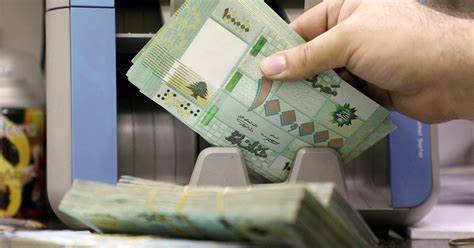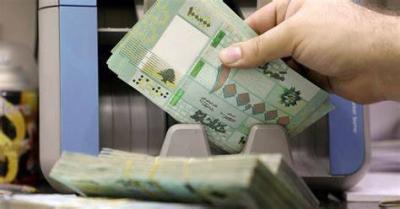The figures regarding the losses inflicted on the Lebanese economy due to the intense military confrontations on the southern front and the ongoing fears of their expansion following the developments in the Gaza war are not stable. The daily cumulative tally of casualties, injuries, displaced individuals, destruction of homes, and significant damage to the very fabric of daily life and economic and productive sectors is increasing. A senior financial official told "Asharq Al-Awsat" that Lebanon has lost a valuable opportunity to restore a positive growth trajectory in GDP data after four consecutive years of severe contraction, which resulted in a historic and rapid shrinkage of its size to nearly $20 billion, down from about $55 billion.
Signs of this promising shift were indeed emerging prior to the outbreak of the Gaza war on October 7, and its rapid expansion the next day to the southern borders directly undermined a number of promising indicators that suggested the potential for returning GDP to a positive growth path, even at low rates, and for establishing a broader economic recovery immediately after finalizing an agreement with the International Monetary Fund.
Alongside the sharp decline in all indicators of the tourism sector, which previously carried the banner of relative recovery with exceptional momentum during the last summer season, facilitating an influx of about $5 billion as an annual cumulative total before the outbreak of war, there are fears that the escalating repercussions will extend to destabilize the ongoing monetary stability for the eighth consecutive month, thereby preventing the monetary authority from successfully transforming it from an emergency situation of questionable effectiveness into a sustainable one that operates as a unified rate on the Central Bank’s budget and the budgets of the financial sector.
Indeed, it has been noted that the tightening of dollar flows has automatically contributed to limiting the pace of the central bank's efforts in the mission of reinforcing its reserves of hard currency, especially after it successfully increased its reserves by more than $1 billion during the months following Wissam Al-Hasan's assumption of the governorship in August. His immediate decision to withhold any new funding from reserves to the state has been pivotal.
### Political Crisis Repercussions
Despite this recovery being based on numerical indicators that do not grant it the hallmark of sustainability, according to international financial institutions, the financial official emphasizes that the restoration of positive GDP growth represents an added value to push towards progress in the political deadlock associated with the presidential vacancy and the limitation of governmental tasks to minimal operational duties. This could consequently initiate the resumption of meeting the reform conditions outlined by the fund in the preliminary agreement.
Meanwhile, with Lebanon and its economy being overlooked in the periodic reports from the IMF, which were disseminated this week during the spring meetings with the World Bank, the "ESCWA" described the partial recovery achieved as consumption-driven growth. This increases the Lebanese economy's dependence on external flows and strengthens fragile service sectors like tourism, rather than representing a robust recovery based on improving production capacities and increasing job opportunities.
### Structural Gap
A structural gap has been noted that hinders the completion of recovery in the future, rooted in the continued brain drain reducing the workforce size. The crisis and its subsequent events have amplified the challenges faced by private sector companies, noting that political stagnation leads to the suspension of public investment projects, especially since government spending is limited and only covers essential items, including public sector salaries and limited support for vital commodities such as cancer medications and chronic disease treatments.
In an update on sectoral data regarding the impact of the war specifically on the agricultural sector, a report from the World Bank indicates that significant damage has occurred and continues to occur to infrastructure; a substantial portion of agricultural lands is being burned and polluted, with the south accounting for about 20% of Lebanon's cultivated land. The most significant impact has been observed on olive cultivation, which represents 7% of total agricultural production in the country; approximately 100,000 square meters of olive orchards have been harmed.
### World Bank Estimates
The World Bank, in its latest reports, predicts that the country will register an economic growth rate of 0.5% this year, following a contraction of 0.2% last year and 0.6% in 2022. The average real GDP growth per capita is also expected to improve from 1.2% in 2022 to 2.4% in 2023, and 3.1% in 2024.
While the previous government announced in the spring of 2020 its refusal to pay the principal and interest payments on international debt bonds (Eurobonds), totaling around $30 billion at the time, the World Bank expects the current account deficit of the general budget to remain high at 10.4% of GDP, compared to 11% in 2023 and 32.7% in 2022. It is noteworthy that Lebanon was already suffering from a high debt-to-GDP ratio before the crisis, reaching 155% by the end of 2018, which rose during the period from 2020 to 2023 to 201%.




